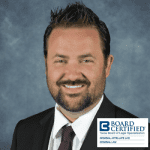
There are many steps that you have to go through to file your federal 2255 Writ, but there are a few important steps to filing the writ that you need to know to have the best shot at freedom for your loved one.
The federal 2255 writ is a modern descendant of the common law petition for a writ of habeas corpus. It is available only to people convicted in federal courts who are in custody.
The 2255 writ is the post-conviction tool most federal prisoners turn to after they have exhausted their appeals.
When it is used effectively, it can be a powerful tool to right injustices that were not or could not have been raised on direct appeal.
This is because it gives courts broad discretion in fashioning appropriate relief, including dismissal of all charges and release of the prisoner, retrial, or resentencing. The 2255 writ can be an important tool for those who have been wrongfully convicted and are serving time in federal prison.
If you believe that you or someone you know may be eligible to file a 2255 writ, it is important to speak with an experienced criminal defense attorney who can help you navigate the process and ensure that your rights are protected.
File It Correctly
One of the most important things to do when filing your writ is to follow the form correctly. There is a form published by every district court in the United States and the territories on which you can write your claims. For the Northern District federal court of Texas here is the form.
Be sure to access the proper form for your district! So to access these forms, you must go to your district court’s website and download them there, or instead, you can contact the district clerk to get a copy of the form from the district court.
It’s important to be accurate when you file your 2255 writ and to follow the form as closely as you can to achieve the best results.
Dealing With Facts
You may want to talk about facts outside of the record. Facts outside of the record are those facts that the court doesn’t already know about or have possession of. It is better to avoid facts that are inside of the record and to present facts that are outside of the record.
For example, you shouldn’t say:
“Judge, you wrongly decided my motion to suppress. You should have granted it when you denied it”.
Instead, you should say:
“There was additional evidence that my lawyer could have presented or additional cross-examination, which my lawyer could have done, and if he had done it then it would have made my motion to suppress successful because that’s bringing in information from outside of the record to tell the judge. Judge, if you would’ve heard these additional things, then you would have agreed with me that my motion to suppress should be granted. I received ineffective assistance of counsel. That’s why you denied my motion to suppress.”
In this way, you’re basing the claim on the main issue and you’re focusing it on something like ineffective assistance of counsel or a Brady violation.
All of the above and more are included in what you may want to present when you talk about facts outside of the record.
It’s important to remember that you’ll be talking about things like ineffective assistance of counsel, prosecutorial misconduct, due process violations, and jurisdictional issues, not just about what happened in the case itself. At their core, all of these things are based upon questioning the constitutionality of your conviction.
Write A Brief
When you file your 2255 Writ, you will use the standard form that all prisoners use. However, you should also write a brief in support of your writ application.
You want to outline to the court that you are entitled to relief through your brief because you’re taking those facts that you’ve outlined neutrally in the application.
In the brief, you have more leeway to tell the story about what happened to you, you have more space to elaborate on the facts, and you can argue to the court about how you’ve been wronged.
Those are the basic steps to filing your federal 2255 Writ so that you can better seek freedom for your loved one.
About The Attorney

Jacob Blizzard is board certified in both criminal law and criminal appellate law.
He regularly practices in the areas of state and federal criminal defense, criminal appeals, post conviction writs of habeas corpus.
In Texas, there are more than 100,000 attorneys licensed to practice, but only 7,450 are board certified.
In the entire State of Texas, as of the 2019 certification year, there were only 87 attorneys board certified in both criminal law and criminal appellate law, making Mr. Blizzard one of 0.087% of attorneys in Texas to hold both of those certifications.

